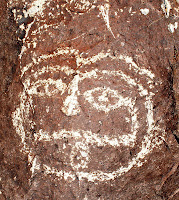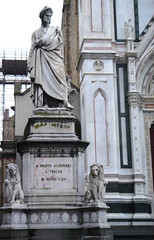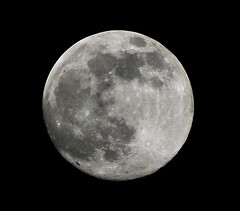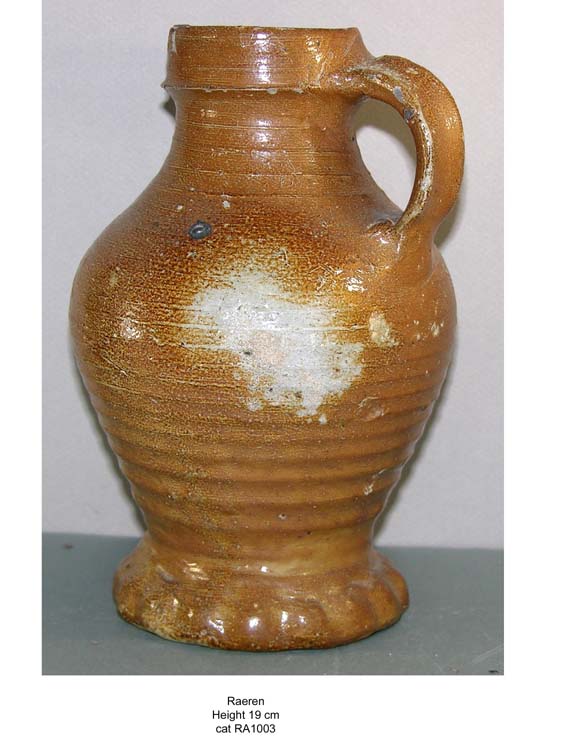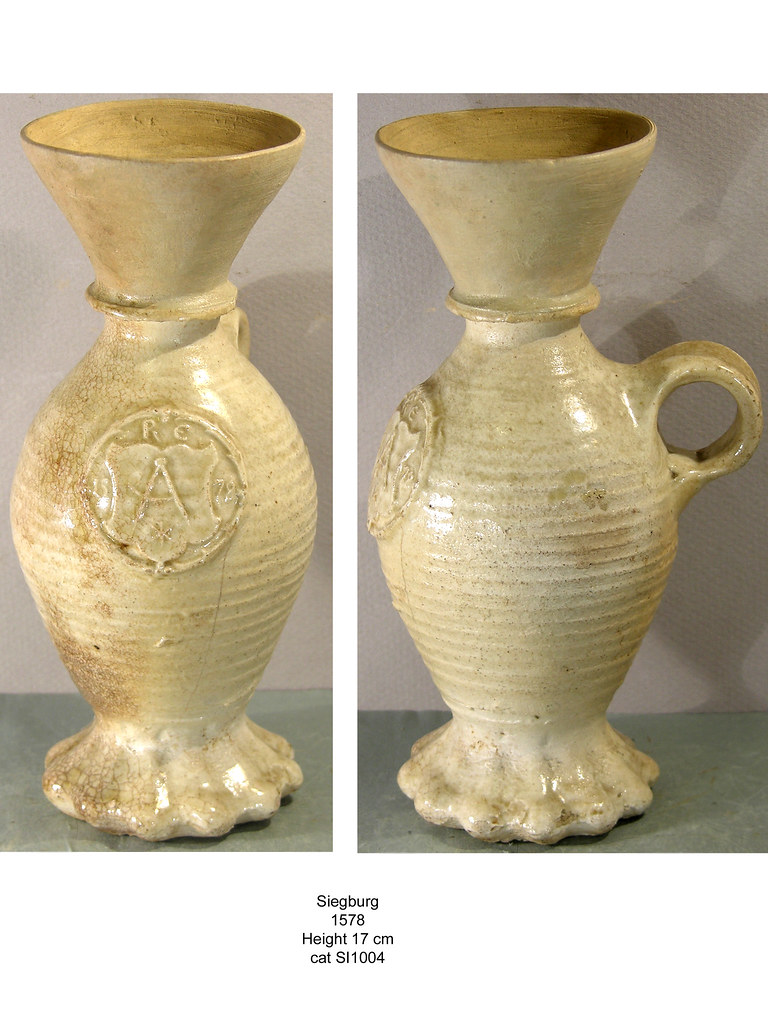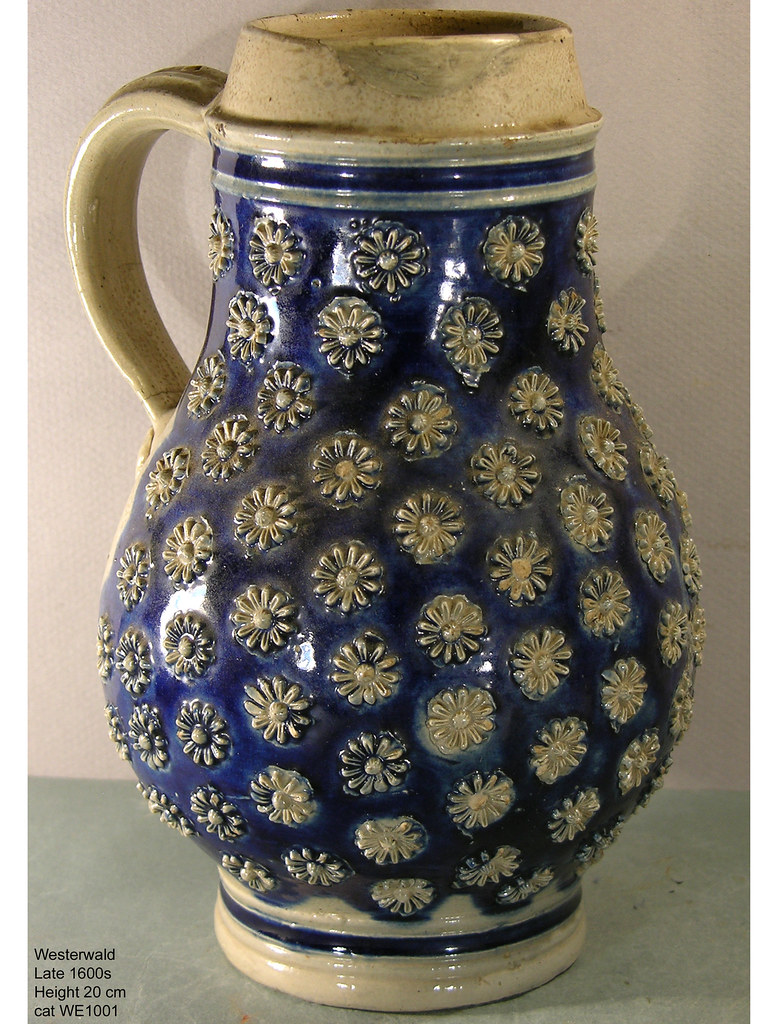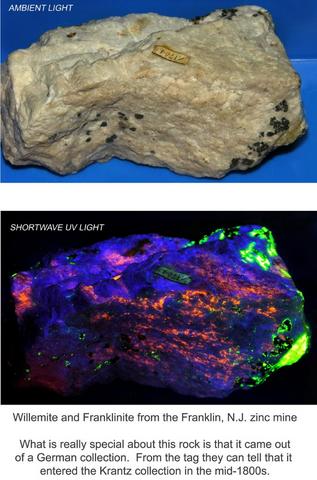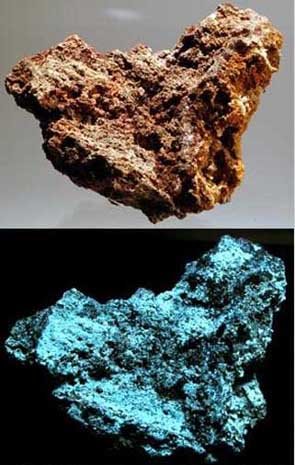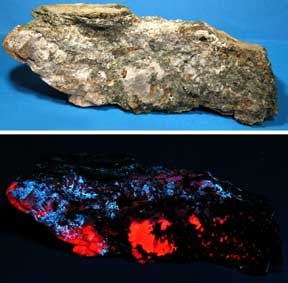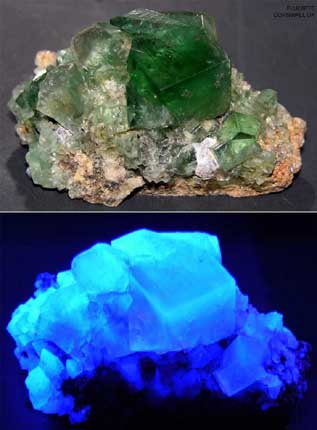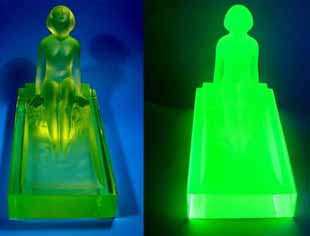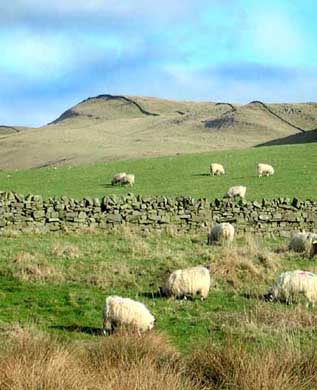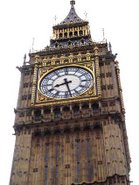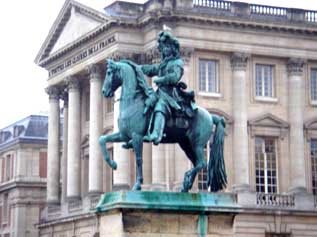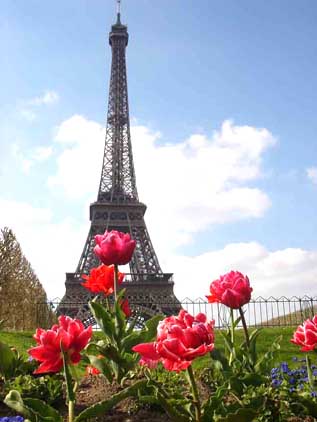Monday, February 26, 2007
Sunday, February 25, 2007
Happy Birthday George Harrison
Yesterday was George Harrison’s birthday. Its hard to say, but he may have been my favourite Beatle. Although John Lennon and Paul McCartney were also my favourites.
And Linda McCartney was my favorite too.
George died at age 58 of lung cancer that had metastasized to his brain. LINK: http://en.wikipedia.org/wiki/George_harrison
Linda McCartney was 57 when she died of breast cancer. She was beautiful. And had really great hooters.
It shows that even those folks who have as much money as God can’t necessarily beat the big C.
And Linda McCartney was my favorite too.
George died at age 58 of lung cancer that had metastasized to his brain. LINK: http://en.wikipedia.org/wiki/George_harrison
Linda McCartney was 57 when she died of breast cancer. She was beautiful. And had really great hooters.
It shows that even those folks who have as much money as God can’t necessarily beat the big C.
... H Paul Garland at 6:35 PM
Saturday, February 24, 2007
Barrel Cactus
I went up to Hatch today to meet some guys with the Deming rock club and do a little field trip to do some collecting out in the wild.
-
East of Rincon on the East side of I-25 there is an old quarry that is very nice and quite productive.
I got some fluorite, barite, and calcite there at the quarry. This is where I saw this really beautiful barrel cactus
-

Later in the day I went ove r South of the Hatch airport looking for some common opal and did indeed find some!
r South of the Hatch airport looking for some common opal and did indeed find some!
 r South of the Hatch airport looking for some common opal and did indeed find some!
r South of the Hatch airport looking for some common opal and did indeed find some!-
... H Paul Garland at 8:30 PM
Pena Blanca
Just north of Bishop's Cap and south of the Organ Mountains in Las Cruces, N.M. there is a red volcanic rock outcrop known as Pena Blanca.
-
I was driving west on I-10 this morning, and I took a delightful little detour over to see it up close. Just beautiful.
-
... H Paul Garland at 8:24 PM
Thursday, February 22, 2007
El Paso Holocaust Museum
This afternoon I helped the El Paso Archaeological Association prepare for their book sale tomorrow and this weekend. My involvement mostly consisted of helping move rather heavy folding tables and lots of boxes of books.
Afterwards I went downtown to the El Paso Holocaust Museum & Study Center. After their fire almost 80% of their museum was lost, so for the last two years they have been in a temporary location. It looks like within maybe two months they will be moving into their new permanent location.
It really is a very good little museum.

While I was there I began discussions with one of the staff members about either loaning or donating my collection of WWII and nazi stuff. I lived in Europe for almost 20 years and have managed to put together a pretty nice little collection of WWII memorabilia. I really have far too much of this neat old stuff, and I would be very happy to donate anything to them they want if they actually are going to put it on display.
I’m bet that over the next few weeks I’ll be talking with them again and I hope that we will work
 something out.
something out.-
This is a link to their website: http://www.elpasoholocaustmuseum.org/
-
And this is a link to pictures of some of the things I've got in my WWII collection:-
... H Paul Garland at 4:13 PM
Monday, February 19, 2007
Valley of Fires Lava Flow
North of Alamogordo in the Tularosa basin there is a large volcanic lava flow or Malpais (the Spanish word for bad land). The valley was filled with molten rock.
This lava flow is 44 miles (71 km) long and is 160 feet thick at its center. It is the youngest such formation in the continental United States.
There is a great diversity of animal life in the malpais. Mule deer, Barbary sheep,
 coyotes, foxes, and bobcats all inhabit this wild country. There are also many birds including Golden and Bald eagles.
coyotes, foxes, and bobcats all inhabit this wild country. There are also many birds including Golden and Bald eagles.One interesting property of many of the animals inhabiting the area is known as melanism. This is an evolutionary trait whereby they develop abnormally dark coloring which allows them to better blend into the dark rock of the environment. Conversely many of the very same species inhabiting the nearby White Sands National Monument have developed
 an abnormally light coloration.
an abnormally light coloration.As the wind has blown in soil a great variety of plants have grown in the crevices and depressions. This includes grasses, ferns, and cacti.
People have lived here since prehistoric times. They left behind shards of pottery and rock art pecked into the surfaces along the edges of the lava. I hiked to this grotto. Ten or more people could easily fit in here. The back wall and ceiling clearly shows evidence of many fires over the years. The ancient people eventually gave way to the Mescalero Apaches who occupied the area when the Europeans began colonizing the area.

... H Paul Garland at 12:43 PM
Roswell
Roswell, New Mexico is a poor, run down, sleepy little town that has very little going for it.
So one has to admire the locals for capitalizing on the UFO fever exhibited by so many misguided loonies.
But the UFO mania sure is fun!
I drove through Roswell yesterday. Just as I pulled into the parking lot of the UFO museum a full bus load of old folks from Nebraska got off the bus and rushed for the museum.
museum.
I looked at that line of grey and blue hair waiting to get in, and I decided that all things considered it would make more sense to go to the Mexican food $5- buffet across the street. As it turns out I made a good decision. The food was excellent and cheap, the waitress was sweet, young, thin, and large busted. I ate and read my Diana Gabaldon book and had a nice break.
across the street. As it turns out I made a good decision. The food was excellent and cheap, the waitress was sweet, young, thin, and large busted. I ate and read my Diana Gabaldon book and had a nice break.
She brought me four sopapillas for desert (even though I had ordered only two) because they turned out rather small.
It goes without saying that she got a nice tip.
So one has to admire the locals for capitalizing on the UFO fever exhibited by so many misguided loonies.

But the UFO mania sure is fun!
I drove through Roswell yesterday. Just as I pulled into the parking lot of the UFO museum a full bus load of old folks from Nebraska got off the bus and rushed for the
 museum.
museum.I looked at that line of grey and blue hair waiting to get in, and I decided that all things considered it would make more sense to go to the Mexican food $5- buffet
 across the street. As it turns out I made a good decision. The food was excellent and cheap, the waitress was sweet, young, thin, and large busted. I ate and read my Diana Gabaldon book and had a nice break.
across the street. As it turns out I made a good decision. The food was excellent and cheap, the waitress was sweet, young, thin, and large busted. I ate and read my Diana Gabaldon book and had a nice break.She brought me four sopapillas for desert (even though I had ordered only two) because they turned out rather small.
It goes without saying that she got a nice tip.

... H Paul Garland at 11:59 AM
Guadalupe Peak
Yesterday I was driving from Carlsbad, NM to El Paso, TX so I went through Guadalupe Pass.
Each year they hold a photography contest to see what picture will go on the front of the annual pass credit card for the national parks. This year El Capitan - Guadalupe Peak won.
For years I had on my wall a black and white photo of El Capitan by Ansel Adams which I had purchased in Santa Fe. The person in gallery where I bought it told me that it was real and an original.
and an original.
Each year they hold a photography contest to see what picture will go on the front of the annual pass credit card for the national parks. This year El Capitan - Guadalupe Peak won.
For years I had on my wall a black and white photo of El Capitan by Ansel Adams which I had purchased in Santa Fe. The person in gallery where I bought it told me that it was real
 and an original.
and an original. -
I broke the glass years later and had to reframe it, only to find out that it was a printing press print, not a photograph. So in disgust at the dishonesty of these capitalists in the galleries of Santa Fe I threw it away.
Guadalupe peak is the highest peak in Texas.
In the late 1970’s I was vice-Chairman on the Guadalupe Wilderness Committee. Wes Leonard and to lesser degree myself played a part in getting major parts of the mountains classified officially as wilderness.
Wes Leonard and to lesser degree myself played a part in getting major parts of the mountains classified officially as wilderness.
When the Butterfield Stage first started operation it went through Guadalupe Pass. This was the highest elevation it reached anywhere on the route from St. Louis to California. Parts of the stage station still exist. And the neatest thing is the ruins are only a few hundred feet from the highway. The ruins are even wheel chair accessible.
Guadalupe peak is the highest peak in Texas.
In the late 1970’s I was vice-Chairman on the Guadalupe Wilderness Committee.
 Wes Leonard and to lesser degree myself played a part in getting major parts of the mountains classified officially as wilderness.
Wes Leonard and to lesser degree myself played a part in getting major parts of the mountains classified officially as wilderness.When the Butterfield Stage first started operation it went through Guadalupe Pass. This was the highest elevation it reached anywhere on the route from St. Louis to California. Parts of the stage station still exist. And the neatest thing is the ruins are only a few hundred feet from the highway. The ruins are even wheel chair accessible.

... H Paul Garland at 11:34 AM
Fluorescent Mineral Collecting - Bingham, New Mexico
I just returned from a very nice camping trip far out in the wilderness collecting fluorescent rocks.
The Oscura mountains are located almost exactly in the center of New Mexico at the Northern edge of White Sands Missile Range. The place I went is almost exactly half way between the massive lava flow at Valley of the Fires 27.7 miles (44,7 km) to the East near Carrizozo, and the Bosque Del Apache Wildlife Refuge along the Rio Grande river 29.4 miles (47,4 km) to the West.
After getting permission to enter the area and do some collecting of fluorescent rocks from the person who owns the clai m on the mine, I turned South off of highway 380 onto White Sands Missile Range road 3501. (N33.88885, W-106.37403). This is a pretty good dirt road when it is dry. It has a few places where a high clearance vehicle is a good idea, but as long as it is not wet you certainly do not need four wheel drive.
m on the mine, I turned South off of highway 380 onto White Sands Missile Range road 3501. (N33.88885, W-106.37403). This is a pretty good dirt road when it is dry. It has a few places where a high clearance vehicle is a good idea, but as long as it is not wet you certainly do not need four wheel drive.
Travelling pretty slowly pulling the little tear drop camping trailer and enjoying the view of the Jornada del Muerto it takes about 30 or 45 minutes to reach the most productive area for fluorescent rocks.
This is about as close as one can normally get to the Trinity Test Site. This is the location where the first atomic bomb was exploded at 5:30 a.m. on 15 July 1945. My Grandfather was also a morning person, and he saw the whole sky light up from El Paso, Texas which is about 140 miles (225 km) to the South.
This first nuclear explosion was from an implosion design plutonium bomb. It has an explosive force equal to 20,000 tons of TNT. To get this in perspective an over the road 18 wheeler truck can normally carry a maximum weight of about 20 tons, so it would take 1,000 over the road lorries filled with TNT to make this big of an explosion.
LINK: http://en.wikipedia.org/wiki/Trinity_site
 This was the same type of bomb that was dropped on Nagasaki, Japan on 9 August 1945 a few weeks later, effectively ending World War II.
This was the same type of bomb that was dropped on Nagasaki, Japan on 9 August 1945 a few weeks later, effectively ending World War II.
It was so hot at ground zero that the soil was melted into a type of olive greenish glass like material which was highly radioactive at first. This material was officially named Trinitie. After 50 years very little radioactivity remains. Of course the only location it is found in the world is at the Trinity Test Site North of Alamogordo, New Mexico. For some time one could collect this material but it is now illegal to do so. But one can still own, sell, and trade the pieces which were collected before the law was enacted making it illegal to collect it. I have a small piece of Trinite in my collection.
I unhitched my little camping trailer at the base of the mountain (N33.82040, W-106.37640). This is where I camped for the night. The place I collected the fluorescent rocks was up a very steep dirt road on the side of the mountain. The best location was from the face of the mountain from this roadcut, behind the old mining works (N33.81780, W-106.37468). In addition to the rock face there were numerous piles of material left on the surface.
The Trinity Test Site is just 11.4 miles (18,4 km) away.
Although anyone with good shoes and who is in fairly good shape could climb up here, carrying down any material collected would be a real problem. So I put the Toyota 4-Runner in low range 4 wheel drive and slowly crept up the road going up this steep mountain. This is indeed a very primitive road where both four wheel drive and high clearance is a requirement. I would not recommend this journey for the timid at heart. I drove up right at sunset, and when I came down it was completely dark. Really no problem, but a nice adrenalin rush nonetheless.
Using both long wave and short wave battery powered fluorescent lights the area is essentially littered with long wave purple fluorescing Fluorite. There is a large amount of Caliche which fluoresces bright orange under short wave, and a dull red fluorescent material which I think is calcite. Under short wave ultraviolet light you see a very bright green fluorescence which I think is probably a zinc ore called Willemite or Zincite. The green fluorescence is so pervasive that it may be traces of uranyl ion which were deposited from the atomic bomb blast. It was a remarkable experience collecting fluorescent minerals there on a moon-less night. Some stones which were as large as a small economy car completely lit up bright green with the Superbright II made by Don Newsome of UV Systems. It was so neat seeing this massive amount of green fluorescence.
It was a remarkable experience collecting fluorescent minerals there on a moon-less night. Some stones which were as large as a small economy car completely lit up bright green with the Superbright II made by Don Newsome of UV Systems. It was so neat seeing this massive amount of green fluorescence.
This is the view looking towards where the first atom bomb was exploded. It sure is beautiful today. I wonder if it was this pretty 50 years ago when the Manhattan project was going on? My Father worked there on the Manhattan project. A good way to get out of having to go to war. Too bad he is no longer with us or I would ask him if it was this pretty back then. Probably it was. When the Spaniards first came through here they said the grass was as high as the stirrups on their saddles. I met a guy the other day who had a great description of why fluorescent mineral collecting was so nice. He called it a combination of both the left and right halves of the brain. The beauty of the stones and the light show is undeniable. And it is so neat how some stones light up in completely different areas and in different colors when illuminated with UV-A versus UV-C light. Some calcite even phosphoresces in a third color. Then the other half of your brain kicks in and enjoys the scientific part of learning about the geology and also the geography of where these minerals come from.
Back at the little camping trailer I had a 12 volt marine deep discharge battery and a 1,200 watt inverter. This is great system to power my small microwave oven so that I can eat in a civilized manner even out in the wilds. And the dual long wave/short wave Way Too Cool light made by William Gardner in Glendale, Arizona. Although it only runs on 115 vac this is a nice UV light too. It is not quite as bright in shortwave as the Superbright II, but it is about 1/3 the price and provides the option of either or both long wave and short wave UV light.
Inside the trailer I’ve got a bed, a small heater, lights powered from the large 12 volt battery, a compact fluorescent light with its own internal rechargeable batteries, and a crank-up rechargeable light with LEDs. I connect my cell phone to the speakers in the trailer and I can listen to 1,500 different MP3s. Since I have all t he Beatles songs on MP3, all night long I listened to John Paul George and Ringo.
he Beatles songs on MP3, all night long I listened to John Paul George and Ringo.
This area is really remote. There is no cell phone service and you cannot even pick up any radio stations on FM. This is what it looked like just before sunrise.
The air is clean and there is no light pollution at all. So when I awoke in the middle of the night needing to go outside and pee I was in for a real treat. There was no moon up and the stars were so bright that they cast a shadow! There were millions of stars visible. I have not seen such a fine night time display in the sky since I was a small child.
Being far away from cities, roads, and people is what I was hoping for when I bought this 4 wheel drive and my little camping trailer. And I am not one bit disappointed.
The Oscura mountains are located almost exactly in the center of New Mexico at the Northern edge of White Sands Missile Range. The place I went is almost exactly half way between the massive lava flow at Valley of the Fires 27.7 miles (44,7 km) to the East near Carrizozo, and the Bosque Del Apache Wildlife Refuge along the Rio Grande river 29.4 miles (47,4 km) to the West.
After getting permission to enter the area and do some collecting of fluorescent rocks from the person who owns the clai
 m on the mine, I turned South off of highway 380 onto White Sands Missile Range road 3501. (N33.88885, W-106.37403). This is a pretty good dirt road when it is dry. It has a few places where a high clearance vehicle is a good idea, but as long as it is not wet you certainly do not need four wheel drive.
m on the mine, I turned South off of highway 380 onto White Sands Missile Range road 3501. (N33.88885, W-106.37403). This is a pretty good dirt road when it is dry. It has a few places where a high clearance vehicle is a good idea, but as long as it is not wet you certainly do not need four wheel drive.Travelling pretty slowly pulling the little tear drop camping trailer and enjoying the view of the Jornada del Muerto it takes about 30 or 45 minutes to reach the most productive area for fluorescent rocks.
This is about as close as one can normally get to the Trinity Test Site. This is the location where the first atomic bomb was exploded at 5:30 a.m. on 15 July 1945. My Grandfather was also a morning person, and he saw the whole sky light up from El Paso, Texas which is about 140 miles (225 km) to the South.
This first nuclear explosion was from an implosion design plutonium bomb. It has an explosive force equal to 20,000 tons of TNT. To get this in perspective an over the road 18 wheeler truck can normally carry a maximum weight of about 20 tons, so it would take 1,000 over the road lorries filled with TNT to make this big of an explosion.
LINK: http://en.wikipedia.org/wiki/Trinity_site
 This was the same type of bomb that was dropped on Nagasaki, Japan on 9 August 1945 a few weeks later, effectively ending World War II.
This was the same type of bomb that was dropped on Nagasaki, Japan on 9 August 1945 a few weeks later, effectively ending World War II.It was so hot at ground zero that the soil was melted into a type of olive greenish glass like material which was highly radioactive at first. This material was officially named Trinitie. After 50 years very little radioactivity remains. Of course the only location it is found in the world is at the Trinity Test Site North of Alamogordo, New Mexico. For some time one could collect this material but it is now illegal to do so. But one can still own, sell, and trade the pieces which were collected before the law was enacted making it illegal to collect it. I have a small piece of Trinite in my collection.

I unhitched my little camping trailer at the base of the mountain (N33.82040, W-106.37640). This is where I camped for the night. The place I collected the fluorescent rocks was up a very steep dirt road on the side of the mountain. The best location was from the face of the mountain from this roadcut, behind the old mining works (N33.81780, W-106.37468). In addition to the rock face there were numerous piles of material left on the surface.
The Trinity Test Site is just 11.4 miles (18,4 km) away.
Although anyone with good shoes and who is in fairly good shape could climb up here, carrying down any material collected would be a real problem. So I put the Toyota 4-Runner in low range 4 wheel drive and slowly crept up the road going up this steep mountain. This is indeed a very primitive road where both four wheel drive and high clearance is a requirement. I would not recommend this journey for the timid at heart. I drove up right at sunset, and when I came down it was completely dark. Really no problem, but a nice adrenalin rush nonetheless.
Using both long wave and short wave battery powered fluorescent lights the area is essentially littered with long wave purple fluorescing Fluorite. There is a large amount of Caliche which fluoresces bright orange under short wave, and a dull red fluorescent material which I think is calcite. Under short wave ultraviolet light you see a very bright green fluorescence which I think is probably a zinc ore called Willemite or Zincite. The green fluorescence is so pervasive that it may be traces of uranyl ion which were deposited from the atomic bomb blast.
 It was a remarkable experience collecting fluorescent minerals there on a moon-less night. Some stones which were as large as a small economy car completely lit up bright green with the Superbright II made by Don Newsome of UV Systems. It was so neat seeing this massive amount of green fluorescence.
It was a remarkable experience collecting fluorescent minerals there on a moon-less night. Some stones which were as large as a small economy car completely lit up bright green with the Superbright II made by Don Newsome of UV Systems. It was so neat seeing this massive amount of green fluorescence.This is the view looking towards where the first atom bomb was exploded. It sure is beautiful today. I wonder if it was this pretty 50 years ago when the Manhattan project was going on? My Father worked there on the Manhattan project. A good way to get out of having to go to war. Too bad he is no longer with us or I would ask him if it was this pretty back then. Probably it was. When the Spaniards first came through here they said the grass was as high as the stirrups on their saddles. I met a guy the other day who had a great description of why fluorescent mineral collecting was so nice. He called it a combination of both the left and right halves of the brain. The beauty of the stones and the light show is undeniable. And it is so neat how some stones light up in completely different areas and in different colors when illuminated with UV-A versus UV-C light. Some calcite even phosphoresces in a third color. Then the other half of your brain kicks in and enjoys the scientific part of learning about the geology and also the geography of where these minerals come from.
Back at the little camping trailer I had a 12 volt marine deep discharge battery and a 1,200 watt inverter. This is great system to power my small microwave oven so that I can eat in a civilized manner even out in the wilds. And the dual long wave/short wave Way Too Cool light made by William Gardner in Glendale, Arizona. Although it only runs on 115 vac this is a nice UV light too. It is not quite as bright in shortwave as the Superbright II, but it is about 1/3 the price and provides the option of either or both long wave and short wave UV light.
Inside the trailer I’ve got a bed, a small heater, lights powered from the large 12 volt battery, a compact fluorescent light with its own internal rechargeable batteries, and a crank-up rechargeable light with LEDs. I connect my cell phone to the speakers in the trailer and I can listen to 1,500 different MP3s. Since I have all t
 he Beatles songs on MP3, all night long I listened to John Paul George and Ringo.
he Beatles songs on MP3, all night long I listened to John Paul George and Ringo.This area is really remote. There is no cell phone service and you cannot even pick up any radio stations on FM. This is what it looked like just before sunrise.
The air is clean and there is no light pollution at all. So when I awoke in the middle of the night needing to go outside and pee I was in for a real treat. There was no moon up and the stars were so bright that they cast a shadow! There were millions of stars visible. I have not seen such a fine night time display in the sky since I was a small child.
Being far away from cities, roads, and people is what I was hoping for when I bought this 4 wheel drive and my little camping trailer. And I am not one bit disappointed.
... H Paul Garland at 8:44 AM
Sunday, February 11, 2007
Tucson Mineral Show
-
This is advertised as the largest mineral show in the world. And I don't doubt it one bit. It was really fantastic.
-
Thanks to Greg Anderson and Charlie Ward there were more fluorescent minerals on sale in one location than I have ever seen. I spent well over $2,000- but this was mostly on various UV lights.
-
Greg sold me an absolutely beautiful large stone with large delicate crystals of green fluorescing calcite. Charlie sold me some Terlingua type calcite out of Mexico and a way too cool light. And from Don Newsome of UV Systems I got a second Superbright II and a piece of Moroccan calcite on fluorite.
-
A guy from Peru sold me a beautfiul delicate fluorescing stalagmite, and also some  red fluorescing black calcite. Yes, thats right. Looks like really dark smoky quartz, except that it is calcite!
red fluorescing black calcite. Yes, thats right. Looks like really dark smoky quartz, except that it is calcite!
 red fluorescing black calcite. Yes, thats right. Looks like really dark smoky quartz, except that it is calcite!
red fluorescing black calcite. Yes, thats right. Looks like really dark smoky quartz, except that it is calcite!-
And on the way back I stopped in Bisbee and bought a piece of Wulfenite from the Red Cloud mine in Yuma, Arizona that fluoresces green , red, and purple. Beautiful.
-
-
It was such a wonderful pleasure meeting so many other glow rock fanatics!
... H Paul Garland at 6:56 PM
Steins Butterfield Stage Coach Station
-
-
During the very brief period from 1858 until the American civil war began in 1861 the Butterfield stage ran from St. Louis to San Francisco.
Setting this up was quite an accomplishment. This was the longest stage coach trail anywhere in the world.
West of Lordsburg, New Mexico and North of the Ghost Town named Steins there is a relatively well preserved foundation of the Steins Butterfield Stage station. The GPS coordinates are N 32.333806 W -109.02778
The GPS coordinates are N 32.333806 W -109.02778
You drive North between the playa on the east and the mountains on the west. If you are willing to drive approximately 30 miles over dirt roads you see some beautiful country and at the end are treated to a delightfully preserved 150 year old stage station.
-
-
During the very brief period from 1858 until the American civil war began in 1861 the Butterfield stage ran from St. Louis to San Francisco.
Setting this up was quite an accomplishment. This was the longest stage coach trail anywhere in the world.
West of Lordsburg, New Mexico and North of the Ghost Town named Steins there is a relatively well preserved foundation of the Steins Butterfield Stage station.
 The GPS coordinates are N 32.333806 W -109.02778
The GPS coordinates are N 32.333806 W -109.02778You drive North between the playa on the east and the mountains on the west. If you are willing to drive approximately 30 miles over dirt roads you see some beautiful country and at the end are treated to a delightfully preserved 150 year old stage station.
-
... H Paul Garland at 7:34 AM
Sonoran Desert
-
-
The Sonoran desert is readily identifiable compared to the Chihuahuan desert by the massive Saguaro cactus and the abundance of Cholla.
-
The elevation generally is lower, approximately 2,500 to 3,000 feet above mean sea level compared with about 4,000 to 4,500 MSL in much of the Chihuahuan desert.
level compared with about 4,000 to 4,500 MSL in much of the Chihuahuan desert.
-
-
The Sonoran desert is readily identifiable compared to the Chihuahuan desert by the massive Saguaro cactus and the abundance of Cholla.
-
The elevation generally is lower, approximately 2,500 to 3,000 feet above mean sea
 level compared with about 4,000 to 4,500 MSL in much of the Chihuahuan desert.
level compared with about 4,000 to 4,500 MSL in much of the Chihuahuan desert.-
-
... H Paul Garland at 7:03 AM
Hohokam Petroglyphs
-
-
About 20 miles West of Tucson, Arizona in the Saguaro National Park there is a little outcrop of rocks called Signal Hill.
of rocks called Signal Hill.
-
-
There are many Hohokam petroglyphs on these rocks.
-
-
-
-
About 20 miles West of Tucson, Arizona in the Saguaro National Park there is a little outcrop
 of rocks called Signal Hill.
of rocks called Signal Hill.-
-
There are many Hohokam petroglyphs on these rocks.

-
-
-
-
-
-
They made these rock etchings in the oxidized patina of the stones during the time period 200 A.D. to
period 200 A.D. to  1450.
1450.
-
 period 200 A.D. to
period 200 A.D. to  1450.
1450.-
-
... H Paul Garland at 6:49 AM
Wednesday, February 07, 2007
Traveling Around America


Tomorrow I’m going up to Tucson, Arizona for the big mineral show.
On the way back I’m planning to attend the 14th annual Bootheel Cowboy Poetry Fiesta in Lordsburg, N.M. and also to visit a few ghost towns including Shakespeare.
My little 1.8 liter Toyota Corolla pulls this tiny little camping trailer just fine. Drivin
 g responsibly I get almost 40 mpg pulling this little teardrop camping trailer.
g responsibly I get almost 40 mpg pulling this little teardrop camping trailer.In the trailer I’ve got lights, a Coleman propane stove, a heater, a bed, a porta-potty, an mp3 player with over 1,500 songs, and both 12 vdc and 115 vac circuits.

It sure beats sleeping in a tent, and it is a lot cheaper than a big Winnebago or sleeping in motels.
... H Paul Garland at 3:44 PM
Tuesday, February 06, 2007
Three Rivers Rock Art





I visited the petroglyph site at Three Rivers, New Mexico today. They say that there are around 20,000 petroglyphs there.
-
It is really fantastic.
-
Unlike Hueco Tanks where one can only see most of the rock art on heavily supervised, scheduled trips, this is on BLM land and one can wander around at will completely alone. This is a much more spiritual experience.

-

-
-
-
-
-
-
-
-
-
-
To see all of the pictures I took there (roughly one hundred and forty) go to this link: http://new.photos.yahoo.com/h_paul_garland/album/576460762388616995#page1
... H Paul Garland at 8:31 PM
Subscribe to:
Posts (Atom)















